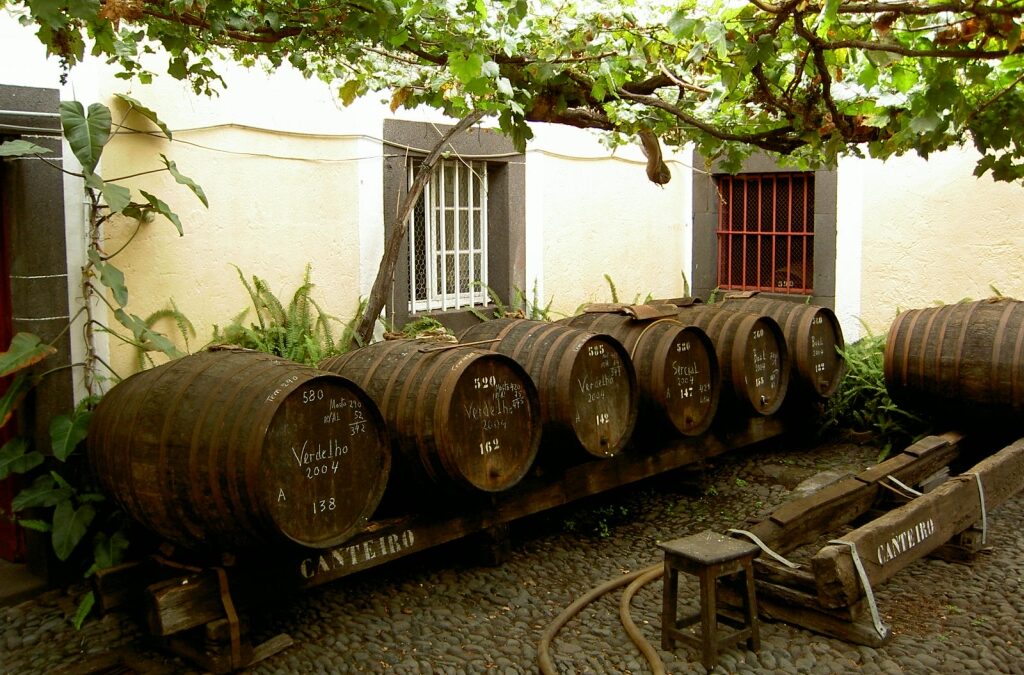
by Ross Kingsley | Apr 6, 2025 | WINES: UNCORKING THE MYSTERY
Madeira wine comes from the Portuguese island of Madeira, located in the Atlantic Ocean. The wine’s history dates back to the Age of Exploration in the 15th century when ships traveling to the Americas, Africa, and Asia would stop at the island to resupply. To preserve the wine on long sea voyages, winemakers began fortifying it with brandy, a practice that contributed to its long shelf life and distinctive characteristics.
A turning point in Madeira’s development occurred when barrels of wine, exposed to heat and movement during shipping, were found to have improved in quality. This accidental discovery led to the intentional heating process still used today.
The Madeira Winemaking Process
Madeira is a fortified wine, meaning a distilled spirit (usually grape brandy) is added during fermentation. This increases the alcohol content and helps preserve the wine. The defining characteristic of Madeira is its exposure to heat, which occurs through one of two primary methods:
-
Estufagem Method – The wine is heated in stainless steel tanks for several months at controlled temperatures. This is a faster and more economical process used for entry-level Madeira wines.
-
Canteiro Method – The wine is aged in barrels placed in warm cellars or attics, where they are gradually exposed to heat over several years. This traditional method results in more complex flavors.
Madeira comes in different styles, from dry to sweet, depending on the grape variety used. Sercial produces the driest Madeira, while Malvasia (Malmsey) creates the sweetest.
How to Drink Madeira
Madeira can be enjoyed in different ways, depending on its style. Dry versions, like Sercial and Verdelho, are often served chilled as an aperitif, while sweeter styles, such as Bual and Malmsey, are typically served at room temperature or slightly chilled as a dessert wine. A small tulip-shaped glass helps concentrate the aromas, enhancing the tasting experience.
Madeira pairs well with a variety of foods. Dry Madeira complements salty appetizers like olives and nuts, while sweeter styles match well with cheeses, chocolate, and fruit-based desserts.
Other Uses of Madeira
Beyond drinking, Madeira is often used in cooking. It adds depth to sauces, particularly in classic French and Portuguese dishes. Madeira sauce, a staple in European cuisine, is commonly paired with meats like beef, veal, and game.
Historically, Madeira also played a role in toasting significant events. It was used to celebrate the signing of the U.S. Declaration of Independence in 1776, reflecting its status as a favored wine among early American leaders.
A Wine Shaped by Time and Tradition
Madeira’s history and production methods set it apart from other fortified wines. Whether sipped on its own, paired with food, or incorporated into recipes, it remains a versatile and distinct choice. Its balance of acidity, sweetness, and complexity ensures it continues to be appreciated in a variety of settings.
Image Credit: https://en.wikipedia.org
_ _ _
© CHURRASCO PHUKET STEAKHOUSE / ALL RIGHTS RESERVED
Reprinting, reposting & sharing allowed, in exchange for a backlink and credits
Churrasco Phuket Steakhouse serves affordable Wagyu and Black Angus steaks and burgers. We are open daily from 12noon to 11pm at Jungceylon Shopping Center in Patong / Phuket.
We are family-friendly and offer free parking and Wi-Fi for guests. See our menus, reserve your table, find our location, and check all guest reviews here:
https://ChurrascoPhuket.com/
#Churrascophuket #jungceylon #phuketsteakhouse #affordablewagyu #wagyu
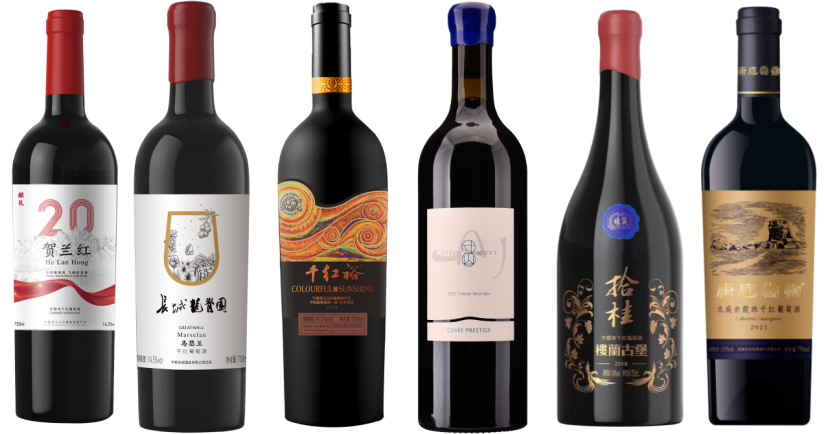
by Ross Kingsley | Mar 30, 2025 | WINES: UNCORKING THE MYSTERY
Historical Roots and Evolution
China’s engagement with viticulture dates back to the Han Dynasty (206 BC–220 AD), when grape cultivation was first introduced. The Tang Dynasty (618–907 AD) saw a flourishing wine culture, with wine consumption celebrated in various facets of society. The modern era of Chinese winemaking commenced in 1892, when diplomat Zhang Bishi founded the Changyu Pioneer Wine Company in Yantai, Shandong Province. He imported grapevines from the United States and Europe, establishing what is now China’s oldest and largest winery.
Prominent Grape Varieties
In contemporary Chinese viticulture, several grape varieties have gained prominence. For red wines, Cabernet Sauvignon leads in cultivation, thriving across diverse regions from Yunnan’s high-altitude vineyards to the coastal areas of Shandong. Another notable red variety is Marselan, a cross between Cabernet Sauvignon and Grenache, which has seen a surge in planting over the past five years, becoming the second most planted red grape after Cabernet Sauvignon.
For white wines, Chardonnay is widely cultivated, particularly in regions like Shandong, where the climate and soil conditions are favorable. Additionally, Riesling has found a niche in certain areas, contributing to the diversity of China’s white wine production.
Leading Wineries Shaping the Industry
China’s winemaking landscape is adorned with several prominent wineries that have significantly contributed to its growth and global recognition.
-
Changyu Pioneer Wine Company: Established in 1892 in Yantai, Shandong Province, it stands as China’s oldest and largest winery, producing a diverse range of wines and maintaining a significant presence in the domestic market.
-
Great Wall Wine Company: Based in Shacheng, Hebei Province, it is one of China’s leading wine producers, known for its extensive vineyards and a variety of wine offerings that cater to a broad consumer base.
-
Dynasty Wine Ltd.: Founded in 1980 as a joint venture, it has become a notable name in the Chinese wine industry, offering a range of wines that blend traditional techniques with modern tastes.
-
Silver Heights: Located in Ningxia, this family-run winery has gained acclaim for its high-quality wines, with winemaker Emma Gao being recognized for her contributions to elevating Chinese wine on the global stage.
-
Helan Qingxue Vineyard: Also situated in Ningxia, it gained international attention when its 2009 Jiabeilan wine won the Decanter World Wine Award’s Red Bordeaux Varietal Over £10 International Trophy, highlighting the potential of Chinese wines.
-
Chateau Changyu–Moser XV: A collaboration between Changyu and Austrian winemaker Lenz M. Moser, this Ningxia-based winery combines European winemaking techniques with Chinese terroir, producing wines that have garnered international interest.
-
Grace Vineyard: Located in Shanxi Province, it is known for its commitment to quality and has been instrumental in promoting boutique winemaking in China.
-
Ao Yun: Situated in Yunnan Province near the Himalayas, this winery has attracted attention for its unique high-altitude vineyards and premium wines that reflect the distinct terroir of the region.
-
Kanaan Winery: Based in Ningxia, it has gained recognition for its quality wines and is part of the region’s burgeoning wine scene.
-
Puchang Vineyard: Located in Xinjiang, it focuses on organic viticulture and has been noted for its efforts to produce wines that express the unique characteristics of the region.
Challenges and Prospects
China’s diverse climates and terrains present both opportunities and challenges for viticulture. In northern regions, harsh winters necessitate practices like burying vines to protect them from extreme cold, while eastern areas contend with summer humidity and rainfall, which can affect grape quality. Despite these challenges, advancements in viticultural techniques and a focus on suitable grape varieties have enabled the production of high-quality wines.
The Chinese wine market has experienced significant growth, with consumption patterns shifting as wine becomes more accessible to the middle class. Younger consumers are increasingly purchasing wine online, with a preference for both domestic and imported varieties. This evolving consumer base, coupled with China’s vast grape production capacity, positions the country for continued expansion in both domestic and international wine markets.
In conclusion, China’s winemaking industry, rooted in a rich history, has evolved into a dynamic and influential player on the global stage. With a focus on diverse grape varieties and the emergence of esteemed wineries, China is poised to further its reputation in the world of wine.
Image Credit: https://www.decanterchina.com/
_ _ _
© CHURRASCO PHUKET STEAKHOUSE / ALL RIGHTS RESERVED
Reprinting, reposting & sharing allowed, in exchange for a backlink and credits
Churrasco Phuket Steakhouse serves affordable Wagyu and Black Angus steaks and burgers. We are open daily from 12noon to 11pm at Jungceylon Shopping Center in Patong / Phuket.
We are family-friendly and offer free parking and Wi-Fi for guests. See our menus, reserve your table, find our location, and check all guest reviews here:
https://ChurrascoPhuket.com/
#Churrascophuket #jungceylon #phuketsteakhouse #affordablewagyu #wagyu
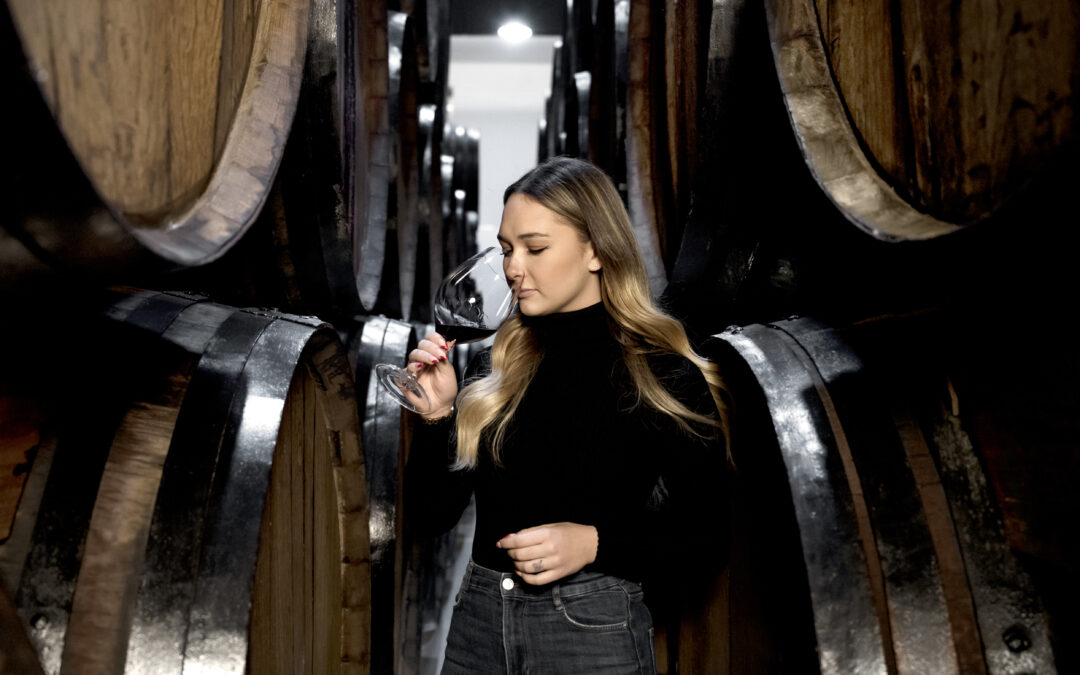
by Ross Kingsley | Mar 23, 2025 | WINES: UNCORKING THE MYSTERY
Wine is more than just a drink; it’s a complex mixture of chemical compounds that define its flavor, aroma, and texture. While its basic ingredients—grapes and yeast—seem simple, the chemistry behind wine is anything but. Let’s break down the key components that make wine such a fascinating beverage.
The Foundation: Water
Water makes up the majority of wine—typically around 85%. This isn’t just any water; it’s infused with natural elements from the grapes, including minerals and organic compounds. The water content plays a crucial role in balancing the wine’s structure and allowing other components to dissolve properly. It also affects the mouthfeel, influencing whether a wine feels light and crisp or full-bodied and rich.
The Kick: Ethanol and Other Alcohols
Ethanol is the primary alcohol in wine, making up about 10-15% of its volume. This is produced during fermentation when yeast converts grape sugars into alcohol and carbon dioxide. Beyond ethanol, trace amounts of other alcohols like methanol, glycerol, and fusel alcohols contribute to the wine’s mouthfeel and complexity. Glycerol, in particular, adds a slight sweetness and viscosity, making wines feel smoother on the palate. Higher alcohol levels can enhance warmth and intensity but can also overwhelm delicate flavors if not well-balanced.
The Essence: Acids
Acidity is one of the defining characteristics of wine, influencing its freshness, balance, and aging potential. The main acids found in wine include:
-
Tartaric Acid – The most dominant acid in wine, giving it stability and structure.
-
Malic Acid – Found in young wines, providing a sharp, green apple-like tartness.
-
Lactic Acid – Created during malolactic fermentation, which softens the wine and adds creamy, buttery notes.
-
Citric Acid – Present in small amounts, enhancing overall brightness.
Acidity not only shapes the flavor but also acts as a natural preservative, preventing spoilage and allowing wines to age gracefully.
The Body: Sugars
While fermentation converts most grape sugars into alcohol, some residual sugar remains. This determines whether a wine is dry, off-dry, or sweet. Even in dry wines, tiny amounts of sugar influence the perception of flavor, enhancing fruitiness and balancing acidity. Late-harvest or fortified wines retain more sugar, making them richer and more dessert-like.
The Aroma: Phenols and Tannins
Phenolic compounds are crucial for a wine’s aroma, color, and texture. The most well-known are tannins, which come from grape skins, seeds, and oak barrels. Tannins create that dry, puckering sensation in red wines and help in aging. Other phenols, such as flavonoids and anthocyanins, contribute to a wine’s color and antioxidant properties. Oak aging introduces additional phenolic compounds like vanillin, which imparts vanilla and spice notes.
The Mystery: Volatile Compounds
Wine’s bouquet comes from hundreds of volatile compounds, including esters, aldehydes, and thiols. These are responsible for fruity, floral, spicy, and even earthy aromas. Some esters develop during fermentation, producing notes of banana, pear, or apple. Thiols, found in Sauvignon Blanc, create intense citrus and passion fruit aromas. With aging, these compounds evolve, leading to secondary aromas like nuts, leather, or tobacco.
Conclusion
Wine is a masterpiece of chemistry, where each component plays a crucial role in shaping the final experience. From water and alcohol to acids and tannins, every element contributes to its flavor, texture, and aroma. Whether you prefer a crisp white, a bold red, or a sweet dessert wine, understanding the chemistry behind wine adds another layer of appreciation to every sip. Next time you pour a glass, take a moment to consider the alchemy at work inside.
Image Credit: https://freepik.com
_ _ _
© CHURRASCO PHUKET STEAKHOUSE / ALL RIGHTS RESERVED
Reprinting, reposting & sharing allowed, in exchange for a backlink and credits
Churrasco Phuket Steakhouse serves affordable Wagyu and Black Angus steaks and burgers. We are open daily from 12noon to 11pm at Jungceylon Shopping Center in Patong / Phuket.
We are family-friendly and offer free parking and Wi-Fi for guests. See our menus, reserve your table, find our location, and check all guest reviews here:
https://ChurrascoPhuket.com/
#Churrascophuket #jungceylon #phuketsteakhouse #affordablewagyu #wagyu

by Ross Kingsley | Mar 16, 2025 | WINES: UNCORKING THE MYSTERY
There’s something undeniably special about the sound of a cork popping from a bottle of wine. It signals celebration, tradition, and craftsmanship. But while natural cork has long been the standard for sealing wine, the industry has increasingly turned to alternatives like composite corks, plastic corks, and screwcaps. Why the shift? Sustainability, cost, and quality control all play a role. Let’s explore the different types of closures, their benefits and drawbacks, and what they mean for wine lovers.
Natural Cork: The Traditional Choice
For centuries, natural cork has been the go-to closure for wine bottles. Harvested from cork oak trees—mainly in Portugal and Spain—this renewable material is carefully stripped from the trees every nine years, ensuring sustainability. Many wineries favor natural cork because of its ability to allow slow oxygen exchange, which can enhance the aging process of wine. It also carries an air of prestige, as premium wines are almost always sealed with traditional cork, reinforcing its status as a mark of quality. Additionally, natural cork is one of the most environmentally friendly closures available. Cork oak forests absorb CO₂ and support diverse ecosystems, making them a key player in sustainable wine packaging.
However, natural cork has its downsides. Aside from sustainability concerns, one of the biggest concerns is cork taint. This is caused by a compound called TCA, which can impart a musty, unpleasant aroma to wine. Though improvements in cork production have reduced the frequency of this issue, it still affects a small percentage of bottles. The cost of natural cork is also a growing concern. Because harvesting cork is labor-intensive and time-consuming, prices have increased, leading many wineries to explore more affordable options. Additionally, because cork is a natural material, no two corks are identical. This variation means that the amount of oxygen entering each bottle can differ, sometimes affecting how the wine ages.
Composite Corks: A Middle Ground
To address some of the challenges associated with natural cork, winemakers have turned to composite corks. These closures are made by binding cork granules together with adhesives, creating a more uniform and predictable product. One of the biggest advantages of composite corks is that they significantly reduce the risk of cork taint. The manufacturing process minimizes TCA contamination, ensuring more consistent quality.
Composite corks are also more cost-effective than their natural counterparts, making them a practical choice for wineries producing mid-range wines. Since they are engineered to be more uniform, they offer a more predictable oxygen exchange, reducing variability from bottle to bottle. Despite these benefits, composite corks don’t last as long as natural cork. Over time, they can break down, making them less suitable for wines that are meant to be aged for decades.
Plastic Corks: Practical but Controversial
Plastic corks were introduced as a modern alternative to traditional cork, designed to eliminate the risk of TCA while maintaining the familiarity of a cork-sealed bottle. These closures, often made from polyethylene, are widely used because they are inexpensive and easy to remove. Unlike natural cork, plastic closures do not carry the risk of cork taint, making them an appealing option for wineries looking for consistency and reliability.
However, plastic corks have significant downsides. Unlike natural and composite corks, plastic does not allow any oxygen exchange, which can affect how a wine evolves over time. Some plastic corks expand once inside the bottle, making them surprisingly difficult to remove. From an environmental perspective, plastic corks are also problematic. While some manufacturers have introduced recyclable or biodegradable versions, most plastic corks are not compostable, raising concerns about their long-term sustainability.
Screwcaps: Convenience Over Tradition?
Perhaps the most divisive closure in the wine industry, screwcaps have surged in popularity over the last few decades, particularly in New Zealand and Australia. In some regions, their use is even mandated by law, as a way to promote sustainability, prevent cork taint, and ensure wine quality. Many wineries prefer screwcaps because they completely eliminate the risk of cork taint, providing a fault-free seal that preserves the wine exactly as the winemaker intended. The tight closure also prevents oxidation, helping wines stay fresher for longer. Beyond quality control, screwcaps are extremely convenient. Unlike cork-sealed bottles, they do not require a corkscrew—just a simple twist, and the wine is ready to pour.
Despite these advantages, screwcaps have yet to win over all wine lovers. One of the biggest losses with a screwcap is the absence of the traditional cork “pop,” a sound that adds to the ritual and romance of opening a bottle. Some consumers still perceive screwcaps as a sign of lower-quality wine, even though they are now used for premium bottles worldwide. From a technical perspective, screwcaps can also lead to reduction, a phenomenon where wines develop sulfur-like aromas due to a lack of oxygen exposure. While this is rare, it can be a concern for certain styles of wine.
So, What’s the Better Choice?
There’s no single “best” closure for wine—only the right closure for a particular bottle. Natural cork remains the gold standard for high-end, age-worthy wines, while composite corks offer a reliable middle ground between tradition and affordability. Plastic corks provide a low-cost alternative but come with concerns about oxygen management and sustainability. Meanwhile, screwcaps continue to rise in popularity, offering a practical, modern solution that ensures consistency and eliminates faults.
As the wine industry evolves, so do the ways we seal and experience wine. Whether you’re twisting off a screwcap or pulling a cork, the most important thing remains the same—what’s inside the bottle.
Image Credit: https://freepik.com
_ _ _
© CHURRASCO PHUKET STEAKHOUSE / ALL RIGHTS RESERVED
>>> Reprinting, reposting & sharing allowed, in exchange for a backlink and credits <<<
Churrasco Phuket Steakhouse serves affordable Wagyu and Black Angus steaks and burgers. We are open daily from 12noon to 11pm at Jungceylon Shopping Center in Patong / Phuket.
We are family-friendly and offer free parking and Wi-Fi for guests. See our menus, reserve your table, find our location, and check all reviews here:
https://ChurrascoPhuket.com/
#Churrascophuket #jungceylon #phuketsteakhouse #affordablewagyu #wagyu
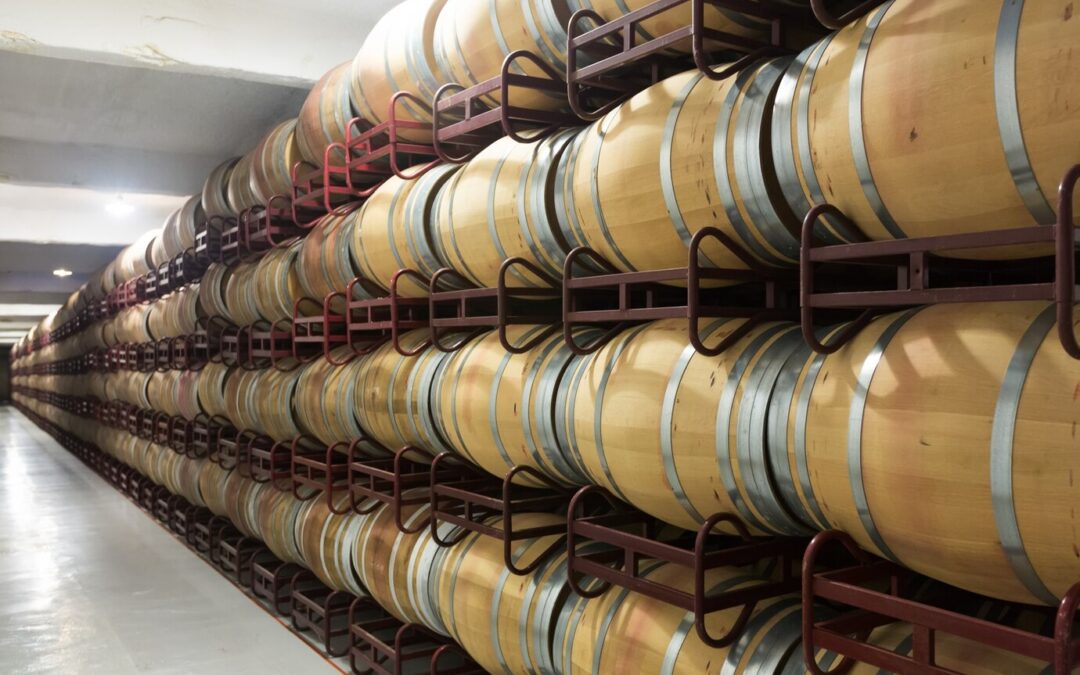
by Ross Kingsley | Mar 9, 2025 | WINES: UNCORKING THE MYSTERY
The process of winemaking is as much about art as it is about science, and one of the key elements in shaping a wine’s flavor is the barrel used during aging. Wine barrels are more than just storage vessels; they impart unique characteristics to the wine, enhancing its complexity, aroma, and taste. Let’s explore the different types of wine barrels and their influence on the final product.
Oak Barrels: The Gold Standard
When people think of wine barrels, oak is often the first material that comes to mind. Oak barrels are highly valued in winemaking due to their ability to add flavors such as vanilla, spice, and caramel. They also contribute to the wine’s texture and structure.
Oak barrels come primarily in two varieties: American and French. American oak barrels are known for their bold influence, providing sweeter and more pronounced flavors like coconut and vanilla. They are widely used for wines like Zinfandel and Cabernet Sauvignon. On the other hand, French oak barrels are more subtle, adding delicate flavors like toasted almonds and spices, making them ideal for premium Chardonnay or Pinot Noir.
European Oak Variants
Beyond French oak, other European oak species, such as Hungarian or Slavonian oak, are gaining popularity. Hungarian oak is similar to French oak but tends to be more affordable, offering a balance of flavor and structure. Slavonian oak, originating from Croatia, is often used in traditional Italian winemaking for wines like Barolo and Chianti. It imparts less pronounced flavors, allowing the fruit to shine while subtly enhancing the wine.
Alternative Materials
While oak is dominant, some winemakers experiment with other types of wood. Acacia barrels, for instance, are occasionally used for white wines. They enhance floral aromas without adding the typical oak flavors, making them a choice for delicate varietals.
Chestnut barrels, though less common, are part of winemaking traditions in Italy and Portugal. They allow more oxygen interaction than oak, which can soften tannins in red wines.
The Role of Aging and Toasting
The impact of a barrel isn’t solely about the type of wood but also its preparation. Toasting levels—light, medium, or heavy—can significantly influence the wine. Lighter toasting preserves more of the wood’s natural flavors, while heavier toasting introduces smokier, spicier notes.
Ultimately, the choice of barrel depends on the winemaker’s vision and the characteristics they wish to emphasize. Whether crafted in French oak or acacia, each barrel type contributes its signature to the art of winemaking, ensuring a diverse range of flavors for wine lovers to enjoy.
Image Credit: https://freepik.com
_ _ _
© CHURRASCO PHUKET STEAKHOUSE / ALL RIGHTS RESERVED
>>> Reprinting, reposting & sharing allowed, in exchange for a backlink and credits <<<
Churrasco Phuket Steakhouse serves affordable Wagyu and Black Angus steaks and burgers. We are open daily from 12noon to 11pm at Jungceylon Shopping Center in Patong / Phuket.
We are family-friendly and offer free parking and Wi-Fi for guests. See our menus, reserve your table, find our location, and check all reviews here:
https://ChurrascoPhuket.com/
#Churrascophuket #jungceylon #phuketsteakhouse #affordablewagyu #wagyu
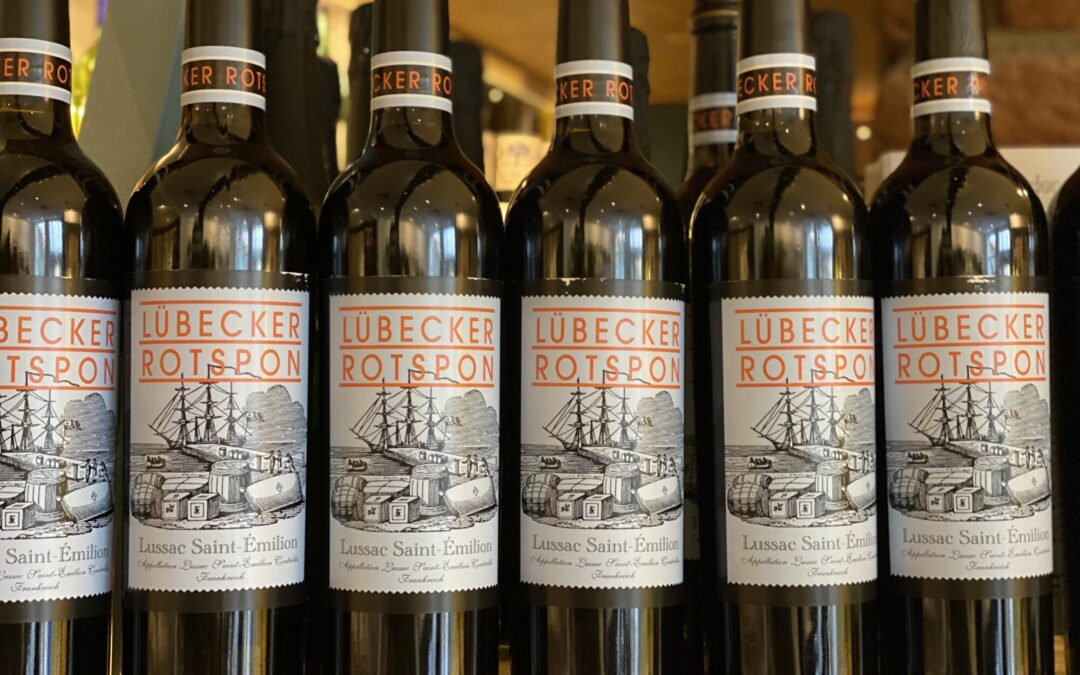
by Ross Kingsley | Mar 2, 2025 | WINES: UNCORKING THE MYSTERY
Rotspon wine, a rare gem in the world of viticulture, represents a fusion of French winemaking and German trading traditions. With a history spanning centuries, Rotspon has carved a unique identity among wine connoisseurs, owing to its distinct origin story, unusual maturation process, and enduring appeal.
Origins and History
The term “Rotspon” originates from the Northern German dialect, where “rot” means red, and “spon” refers to a wooden cask. This name highlights the wine’s historical connection to the flourishing maritime trade of the 13th and 14th centuries. The Hanseatic League, a powerful confederation of trading cities in Northern Europe, played a pivotal role in transporting goods across the region. French wines, particularly from Bordeaux, were highly prized and became a significant export commodity.
German merchants purchased these wines in bulk and transported them in wooden barrels to ports in cities such as Lübeck, Hamburg, and Bremen. What made Rotspon unique was its maturation process. Unlike traditional French wines that aged in cellars, Rotspon continued aging during its voyage and while stored in the cooler, humid conditions of northern Europe. This resulted in a muc different “hybrid” flavor profile, often described as milder compared to its counterparts aged exclusively in French cellars.
Why Rotspon is Unusual
The distinctiveness of Rotspon lies in its maritime maturation. The constant movement during transportation and the varying temperature and humidity levels of the northern European climate influenced the aging process. This environment allowed the wine to develop unique characteristics, distinguishing it from wines aged in the relatively stable conditions of southern France.
Additionally, Rotspon is not about a specific grape varietal or blend. Instead, it encompasses red wines sourced from various French regions, predominantly Bordeaux. The emphasis is on the transformation that occurs during its journey and subsequent storage in German trading cities, making it less about the terroir and more about the process.
Modern Use and Acceptance
Today, Rotspon remains a rare niche product, cherished more for its historical roots than its flavor. It is particularly popular in northern Germany, where traditional merchants still import and mature French wines using methods reminiscent of the Hanseatic era. Wine enthusiasts often seek Rotspon for its mild texture and as a piece of living history.
While its production is relatively limited, Rotspon has found a loyal following among those who appreciate its blend of cultural heritage and distinctive taste.
Image Credit: https://luebeck-zwischenzeilen.de
_ _ _
© CHURRASCO PHUKET STEAKHOUSE / ALL RIGHTS RESERVED
>>> Reprinting, reposting & sharing allowed, in exchange for a backlink and credits <<<
Churrasco Phuket Steakhouse serves affordable Wagyu and Black Angus steaks and burgers. We are open daily from 12noon to 11pm at Jungceylon Shopping Center in Patong / Phuket.
We are family-friendly and offer free parking and Wi-Fi for guests. See our menus, reserve your table, find our location, and check all reviews here:
https://ChurrascoPhuket.com/
#Churrascophuket #jungceylon #phuketsteakhouse #affordablewagyu #wagyu






